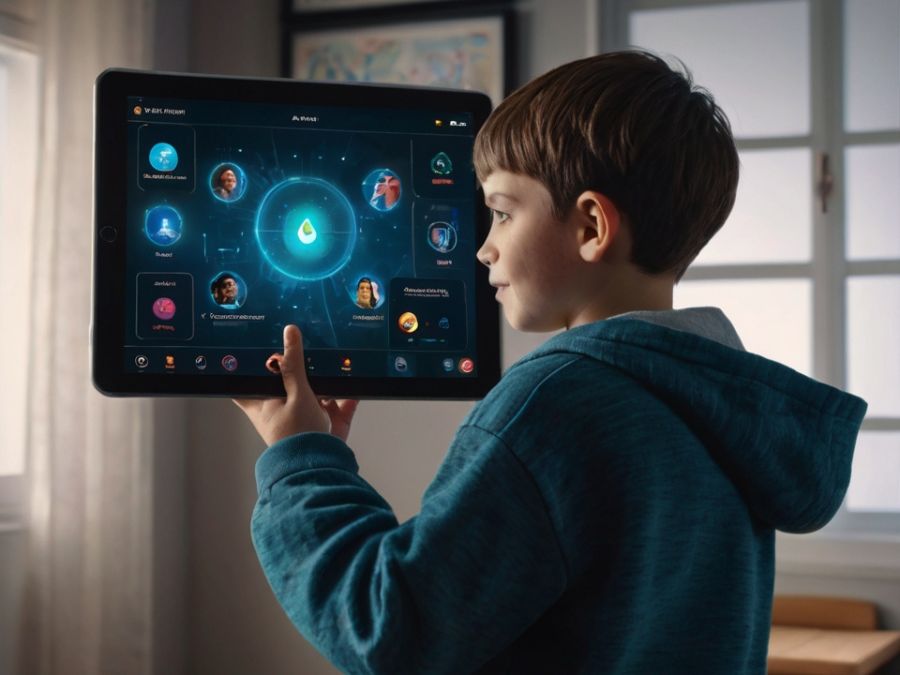Artificial Intelligence and Autism: Innovative Solutions for Everyday Challenges

Introduction: The Intersection of Artificial Intelligence and Autism
In recent years, the convergence of Artificial Intelligence and Autism has opened a world of opportunities for individuals on the autism spectrum, their families, and professionals. By mimicking human behavior and learning patterns, AI technologies can provide highly personalized support—something particularly valuable for people with neurodiverse profiles.
This article explores the role of AI in autism support across key areas: diagnosis, communication, emotional regulation, education, employment, daily life, and long-term care. Our goal is to deliver practical, science-based, and empathetic guidance that empowers every reader to understand how this technology is changing lives for the better.
1. Understanding Autism Through the Lens of AI

Autism Spectrum Disorder (ASD) is a neurodevelopmental condition that affects social communication, behavior, and sensory processing. While each autistic person is unique, common characteristics include:
- Difficulty interpreting social cues
- Repetitive behaviors
- Sensory sensitivities
- Highly focused interests
- Need for structured routines
This diversity requires individualized support systems—precisely where Artificial Intelligence and Autism intersect most effectively. AI’s adaptability makes it ideal for designing solutions that respect each person’s needs, preferences, and developmental profile.
2. AI in Early Detection and Diagnosis of Autism

Early intervention is critical in autism care. However, diagnosis often involves long waiting lists and subjective observation. AI is revolutionizing this stage by providing tools that accelerate and refine the diagnostic process.
Examples include:
- AI algorithms analyzing video footage of infants to detect early behavioral patterns
- Speech recognition technologies that flag atypical prosody or language development
- Eye-tracking and facial recognition systems that identify reduced social gaze
These tools don’t replace specialists but offer strong support for early, accurate assessments.
3. AI and Communication: Giving Voice to the Voiceless

Many individuals with autism experience difficulties with verbal communication. Here, Artificial Intelligence and Autism work hand-in-hand to unlock new ways of expressing thoughts, emotions, and needs.
Some key solutions include:
- Speech-generating devices (SGDs) powered by AI that suggest phrases based on context
- Apps with visual symbols and AI prediction engines that adapt to user preferences
- Natural language processing that allows users to write or speak in their own way and be understood
AI bridges the gap between intention and expression, making conversations more inclusive.
4. Personalized Education Through AI

Education for autistic students needs to be personalized, structured, and adaptive. With AI, this is more than possible—it’s increasingly accessible.
Benefits include:
- AI-powered tutoring apps that adjust to the student’s learning speed
- Visual learning platforms with gamified feedback and sensory-friendly interfaces
- Behavior analysis tools that monitor engagement and suggest new strategies in real-time
By tailoring content and environment, Artificial Intelligence and Autism together create more inclusive, productive learning experiences.
5. AI and Routine: Bringing Order to Daily Life

Many autistic individuals thrive with structured, predictable routines. AI-powered apps can assist by organizing daily activities, reducing uncertainty, and minimizing stress.
Features of these apps:
- Visual schedules with voice prompts
- Behavior tracking and mood logging
- Custom reminders for hygiene, meals, and transitions
- Integration with smart home devices for lights, music, or reminders
These innovations support independence and reduce the need for constant caregiver supervision.
6. AI and Social Skill Development

Social interaction can be confusing or overwhelming for autistic individuals. Artificial Intelligence and Autism converge to offer practical tools to improve understanding and participation in social contexts.
These tools include:
- Emotion recognition avatars that provide real-time feedback
- Role-playing simulations using VR to practice social scenarios
- AI-powered chatbots that help users rehearse conversations
This safe and repeatable practice fosters confidence and better outcomes in real-world settings.
7. AI and Emotional Regulation: Preventing Meltdowns

Autistic individuals often struggle with emotional regulation and sensory overload. AI can be trained to detect early signs of distress and help the person self-regulate before a crisis occurs.
Examples include:
- Smartwear detecting heart rate or sweating
- AI alerting caregivers or suggesting calming strategies
- Voice assistants guiding breathing exercises or playing soothing sounds
With these tools, users gain autonomy in recognizing and managing their emotions.
8. Supporting Employment with AI

The professional world can be a challenge for autistic individuals, but also an opportunity when well-supported. AI is transforming how we prepare and integrate autistic adults into the workforce.
Innovations include:
- AI-based job coaching platforms
- Mock interviews with virtual HR bots
- Task management apps with visual, step-by-step guides
- Soft skill development with real-time feedback
Companies benefit from neurodiverse teams, and AI ensures that each person is supported to thrive.
9. Empowering Families and Caregivers with AI

Caring for someone on the spectrum can be both rewarding and exhausting. Artificial Intelligence and Autism also bring solutions for those who provide support—helping families navigate complexity with clarity.
Useful tools:
- Daily planners synced across devices
- Mood and behavior logs with predictive alerts
- Voice-activated assistants offering tips based on past events
- AI-based journaling apps that generate reports for doctors or therapists
These tools allow caregivers to focus more on connection and less on guesswork.
10. Ethics and Data Privacy in AI Use for Autism

The power of AI comes with responsibility. When applied to autism support, it raises crucial questions about consent, data usage, and emotional autonomy.
Key considerations:
- Informed consent for data collection
- Transparency in algorithm decision-making
- Guardrails against over-monitoring or dependency
- Inclusive design involving autistic voices
AI should be a companion—not a controller—working with the user, not over them.
11. The Future of Artificial Intelligence and Autism

Looking ahead, the potential of Artificial Intelligence and Autism is boundless. Research and development are pushing forward innovations that redefine what’s possible.
Trends to watch:
- Predictive AI that anticipates sensory overload
- Autonomous social robots that serve as friends and coaches
- AI-integrated classrooms adapting instantly to student moods
- Smart city features accessible for autistic citizens via wearable tech
The future is inclusive, adaptive, and profoundly human—powered by compassionate AI.
Conclusion: A New Era of Compassion and Possibility

The fusion of Artificial Intelligence and Autism is not just a technological achievement—it’s a social revolution. By harnessing AI’s power to serve individual needs, we open doors to greater independence, dignity, and inclusion for people on the spectrum.
But technology alone isn’t enough. It must be paired with empathy, ethics, and lived experience. Together—with families, developers, educators, and autistic voices—we can shape a world where everyone is supported, respected, and empowered.







